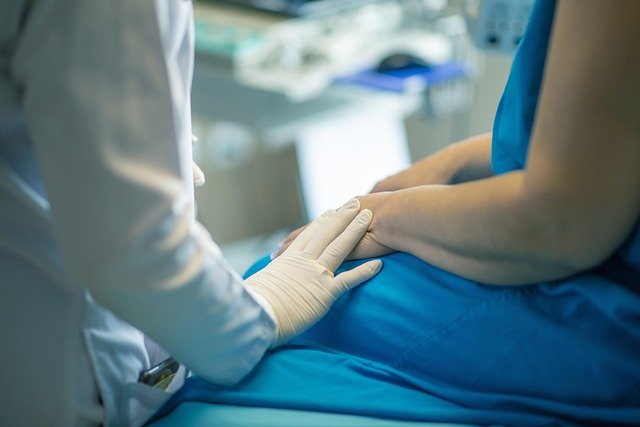Rhinoplasty Uncovered: Complete Guide to Nose Surgery
Rhinoplasty, commonly called a nose job, reshapes the nose for cosmetic balance or to restore breathing function. This in-depth guide covers who may benefit medically, how the operation is performed, typical recovery timelines, expected costs and insurance issues, and possible complications—plus tips for choosing an experienced surgeon.

Rhinoplasty is a surgical procedure designed to change the nose’s shape, proportions, or function. People pursue it to improve facial symmetry, correct deformities from birth or injury, or relieve breathing problems. Knowing why the surgery is recommended, what happens in the operating room, what recovery looks like, and the likely financial and medical trade-offs helps anyone considering rhinoplasty make an informed choice.
When Rhinoplasty Is Medically Recommended
While many seek rhinoplasty for cosmetic refinement, the operation also serves important medical purposes. Congenital nasal deformities present at birth can be corrected to improve both appearance and nasal function. Trauma—such as fractures to the nasal bones or displaced cartilage—often requires reconstructive work to restore alignment and contour. Functional rhinoplasty targets internal structural problems that impair airflow; a deviated septum is the most common example and can cause chronic nasal blockage, snoring, or disturbed sleep. In some cases, reshaping nasal passages and reinforcing support structures helps reduce chronic sinusitis or longstanding breathing difficulties, improving overall respiratory comfort and quality of life.
How the Procedure Is Carried Out
Rhinoplasty generally lasts between one and three hours and is most commonly performed under general anesthesia. Surgeons access the nasal skeleton either through incisions concealed inside the nostrils (closed approach) or via a small external cut across the columella, the tissue strip between the nostrils (open approach). After lifting the skin, the surgeon sculpts bone and cartilage by removing, repositioning, or adding tissue to achieve the intended contour. Cartilage grafts used for support or augmentation may come from the septum, the ear, or, in more extensive reconstructions, the rib. Once the internal framework is reshaped, the skin is redraped and incisions are closed with sutures. External splints or internal packing may be applied to stabilize the nose during the earliest phase of healing.
Recovery and Aftercare Expectations
Swelling and bruising around the nose and eyes are common during the first one to two weeks. Most patients can resume light daily activities within 7–14 days, though contact sports and vigorous exercise should be avoided for several weeks to prevent trauma to the healing nose. Discomfort is usually manageable with prescribed pain medication, ice packs, and elevation of the head. Surgeons will provide instructions on nasal hygiene, caring for sutures and dressings, and any restrictions on medications or supplements.
Although the visible improvements are often noticeable early on, the tissues of the nose retain subtle swelling for months, and in some cases up to a year, so final shape refinements emerge gradually. Scheduled follow-up visits let your surgeon monitor healing, remove splints or stitches when appropriate, and address any concerns as they arise.
Costs, Insurance, and Financial Considerations
The total cost of rhinoplasty depends on location, the surgeon’s expertise, facility and anesthesia fees, and whether grafts or revision work are required. Cosmetic-only procedures are generally elective and not covered by health insurance. When rhinoplasty is performed for functional reasons—such as correcting a septal deviation that affects breathing—insurers may provide partial or full coverage, often contingent on detailed documentation and preauthorization.
| Procedure Type | Average Cost Range | Potential Insurance Coverage |
|---|---|---|
| Cosmetic Rhinoplasty | $5,000 - $15,000 | Generally not covered |
| Medical Rhinoplasty | $5,000 - $20,000 | Often partially covered |
| Revision Rhinoplasty | $7,500 - $25,000 | Case-dependent coverage |
Prices, rates, or cost estimates mentioned in this article are based on the latest available information but may change over time. Independent research is advised before making financial decisions.
When comparing estimates, confirm which items are included: the surgeon’s fee, anesthesia, operating facility charges, pre- and post-operative visits, and any necessary implants or graft materials. If you believe insurance might apply, obtain preauthorization and ensure the insurer receives clear documentation of the functional problem from your surgeon.
Potential Risks and Complications
As with any surgery, rhinoplasty carries risks. These can include bleeding, infection, reactions to anesthesia, prolonged swelling, and unsatisfactory cosmetic results. Scar tissue, new or persistent nasal obstruction if internal modifications are excessive, and asymmetry are possible. Some patients need revision surgery to refine outcomes or address complications from the initial operation. Selecting a board-certified plastic surgeon or an otolaryngologist with significant rhinoplasty experience reduces the chance of adverse events and increases the likelihood of a satisfactory result.
Choosing a Surgeon and Making a Decision
Thorough preparation helps set realistic expectations. Research surgeons’ credentials, review before-and-after galleries of comparable cases, and ask about their experience and revision rates. During consultations, discuss specific goals, the techniques recommended for your anatomy, and a detailed postoperative plan including timeline and follow-up. Good communication about desired outcomes and potential trade-offs is essential.
Rhinoplasty can harmonize facial features and address breathing problems when performed for appropriate reasons by a skilled specialist. Carefully weigh the medical benefits, financial implications, recovery demands, and potential risks before proceeding.
This article is for informational purposes only and should not be considered medical advice. Please consult a qualified healthcare professional for personalized guidance and treatment.






